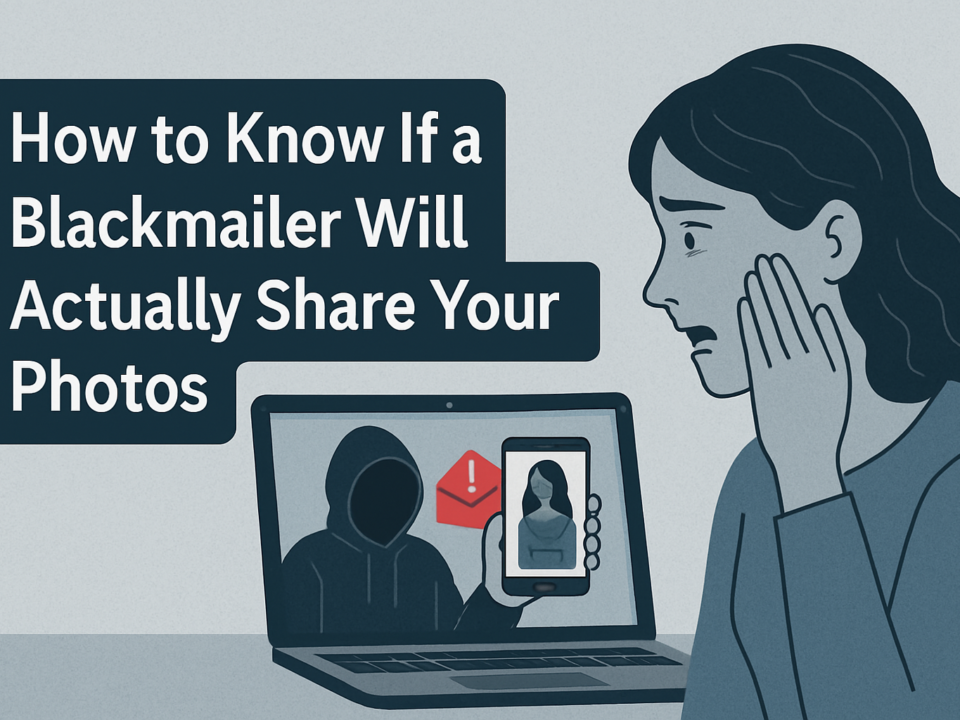
How to Stop Someone from Blackmailing You on Instagram (Without Making It Worse)
June 5, 2025
How to Get Rid of Blackmailers (Without Paying a Cent)
June 5, 2025Sextortion scams are becoming increasingly common, with criminals using emotional manipulation and threats to blackmail victims. Understanding the warning signs early can help you take action before it's too late. In this guide, we'll walk you through the top 10 red flags that suggest you may be the target of a sextortion scam.
1. Unexpected Friend Requests or Messages from Strangers
One of the most common tactics scammers use is creating fake profiles to initiate contact. They may start with innocent conversation before moving into more intimate or flirtatious messages.
At Blackmail Shield, we’ve seen how these seemingly harmless messages can quickly escalate into serious threats. The goal is to build rapport and get you to share sensitive information.
2. The Scammer Pushes for Personal Conversations
A typical warning sign is when the person you're talking to online insists on having private conversations, whether through direct messages or video chats. They may even try to convince you that they have shared intimate details with you to build trust.
It’s not uncommon for victims to tell us they felt “special” or “important” — but this is a manipulation tactic designed to lower your guard.
3. They Pressure You for Explicit Content
After a few conversations, the scammer may begin to pressure you into sharing explicit images or videos. They might promise to reciprocate, but once they have the content, they’ll use it to blackmail you.
In many cases, victims report feeling guilt or shame. The truth is, these scammers are highly skilled manipulators who prey on emotions.
4. The Threat of Leaking Your Content
If you've already shared explicit content, the scammer will often threaten to release it to your friends, family, or colleagues unless you meet their demands, usually for money or more explicit material.
The pressure feels real, and the threats are frightening. At Blackmail Shield, we work to remove this content and ensure it’s kept private.
5. Requests for Payment in Untraceable Methods
Once the blackmail threat is made, the scammer will likely ask for payment through difficult-to-trace methods, such as cryptocurrency, gift cards, or wire transfers. These requests are meant to make the transaction harder to trace.
If you’re asked to pay through an unconventional method, take a step back. This is a major red flag.
6. The Scammer Threatens to Destroy Your Reputation
In addition to the threat of releasing explicit content, scammers may try to destroy your online reputation by spreading rumors or false information. The threat of reputational damage is often used as leverage.
Reputation damage can be emotionally taxing. But remember: these threats are often baseless and part of a larger scheme to extort money from you.
7. They Display Knowledge of Your Personal Details
To convince you they have access to your personal information, the scammer may reveal private details about your life, like your social media profiles, where you live, or your job. This can make the threat feel more real.
In many cases, these scammers are just doing basic research online. But it can feel unsettling when they seem to know so much about you.
8. Fake Accounts and Changing Details
Sextortion scammers often create fake accounts that are designed to look legitimate, using attractive profile photos or personas to deceive their targets. The scammer may also change their account details frequently to cover their tracks.
It's common for these fake profiles to switch names or photos quickly. If you notice this, it's time to stop the conversation immediately.
9. They Demand You Keep Everything Secret
The scammer will often ask you not to tell anyone about the threats they’ve made. They may claim that involving others will make things worse or will result in the content being released sooner.
Secrecy is one of the most dangerous aspects of sextortion. When in doubt, always involve a trusted professional like Blackmail Shield to protect your privacy and help you get through it safely.
10. The Situation Feels Too Good to Be True
Finally, if the interaction feels too perfect or too flattering to be true, it likely isn’t. Many sextortionists prey on victims’ emotional vulnerabilities, making them feel loved or admired to lower their defenses.
Victims often tell us that they didn’t realize it was a scam until the blackmail threat came. Trust your instincts if something feels off.
What to Do If You Recognize These Signs
If you’ve noticed any of these warning signs, it’s crucial to take action right away. Here’s what you should do:
Do Not Respond: Cut all communication with the scammer immediately.
Save Evidence: Take screenshots and save messages that show the threats and demands.
Report It: Contact the platform’s support team and report the user for harassment or blackmail.
Seek Professional Help: Reach out to a professional like Blackmail Shield to help protect your privacy, remove any explicit content, and disrupt the blackmailer's access to your data.
How Blackmail Shield Can Help
If you or someone you know is facing a sextortion scam, don't wait to act. At Blackmail Shield, we specialize in:
Content removal using advanced technologies like RAFT
Legal support to help guide you through the process
Emotional and psychological support to get you through the crisis
24/7 expert guidance to protect your privacy and stop the scammer in their tracks
If you're already being targeted, the best time to act is now. Every minute counts in stopping the blackmailer from gaining more control over your data.
Final Thoughts
Sextortion scams are dangerous and can happen to anyone. The key is recognizing the warning signs early and taking action before the scammer gains more power over your personal information. If you notice any of the red flags mentioned above, reach out for professional help immediately.
Need Help Now?
Contact our expert team at Blackmail Shield for fast, confidential assistance in handling sextortion scams.




